Octave Sign – 8va or 8vb – What is the difference
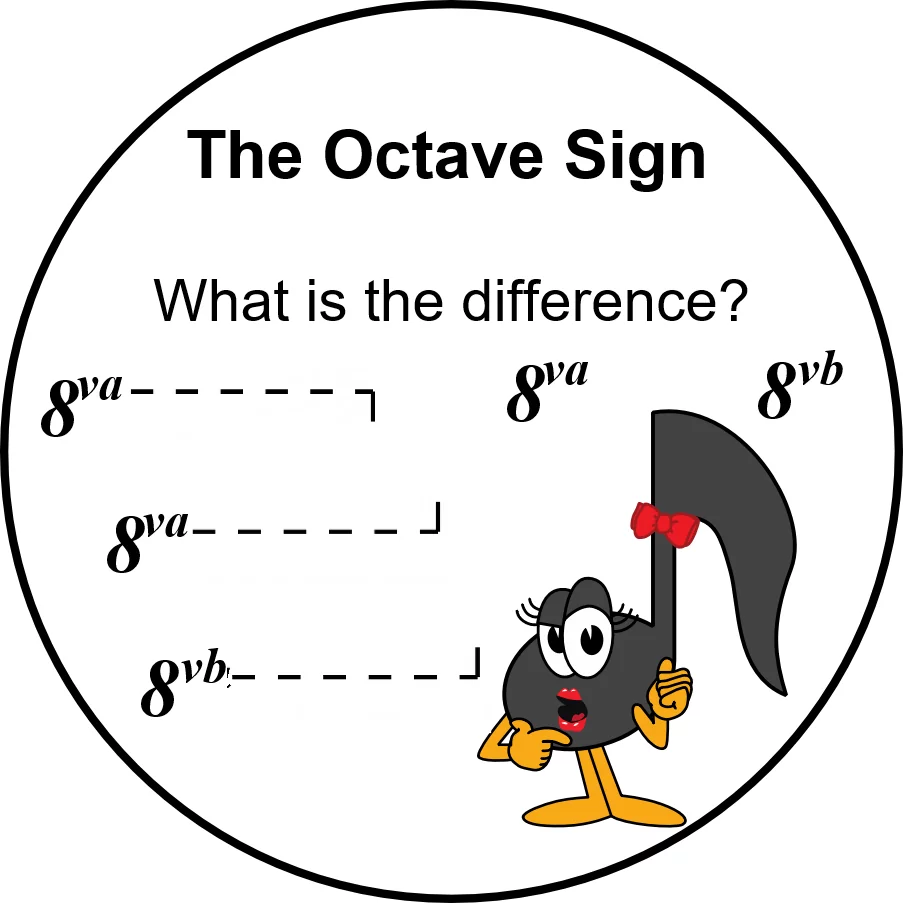
When writing music, using an Octave Lower Sign or an Octave Higher Sign is often much easier than using a lot of ledger lines.
The Dolmetsch Online Music Dictionary writes:
- an Octave (Latin, octavus, literally meaning “eighth") is sometimes abbreviated to 8ve.
- 8va stands for ottava - the Italian word for octave.
- The notation 8va (as seen in sheet music) means to play this an octave higher than written.
However, what about the notation 8vb? What does that mean? Is there a difference between 8va and 8vb?
Let's find out!
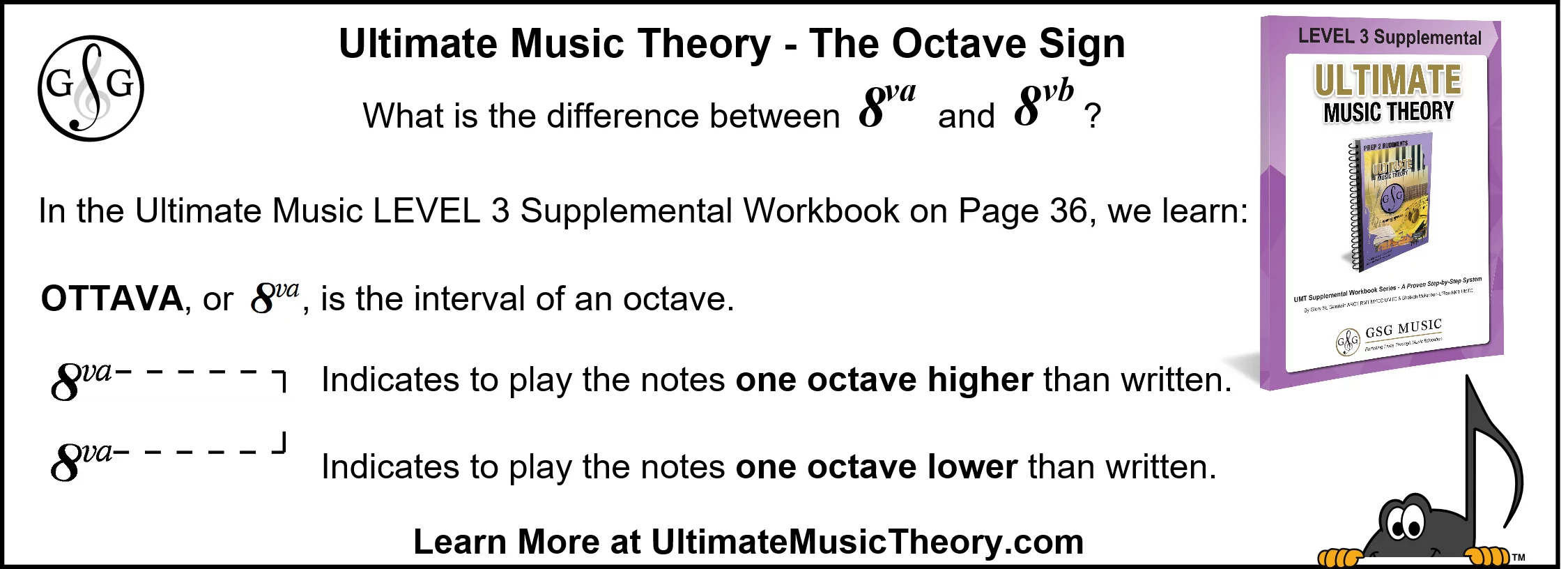
Octave Sign - What is the Difference?
In the Ultimate Music Theory Workbooks, we use the "8va" sign.
When written above a note or phrase, it indicates to play one octave higher.
When written below a note or phrase, it indicates to play one octave lower.
As the Examiner for the Ultimate Music Theory Certification Course and the Complete Rudiments Theory Course, I love being able to support Teachers with their questions.
This week, I received an email from a Teacher asking "what is the difference between 8va and 8vb"?
Before you read this Blog, let's play a game of "Spot The Boo-Boo"!
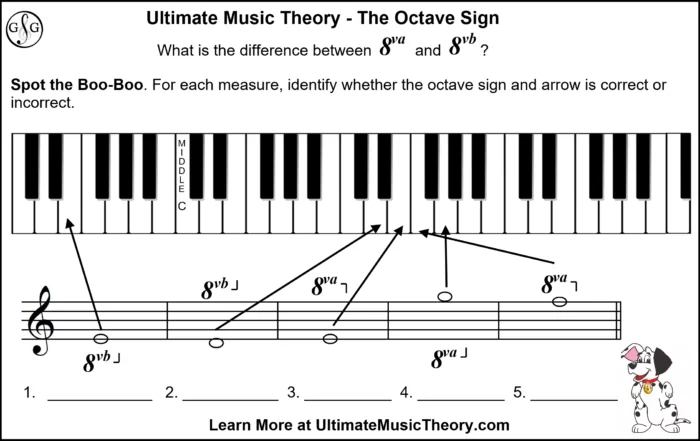
How confident are you with your answers?
The Octave Sign - 8va or 8vb - What is the difference?
8va = Ottava = Octave.
8vb = Ottava Bassa = Octave Below (Octave lower).
To indicate that a note, section, phrase or part of the music is to be played one octave higher than written, we write 8va above the music.
To indicate that a note, section, phrase or part of the music is to be played one octave lower than written, we write 8va OR 8vb below the music.
Since I like to teach using the KISS method (Keep it Super Simple), it is easier to teach (as we do in the LEVEL 3 Supplemental Workbook) to use the 8va abbreviation.
Your Students can write 8va or 8vb to indicate to play one octave lower than written. However, they can only write 8va to indicate to play one octave higher than written.
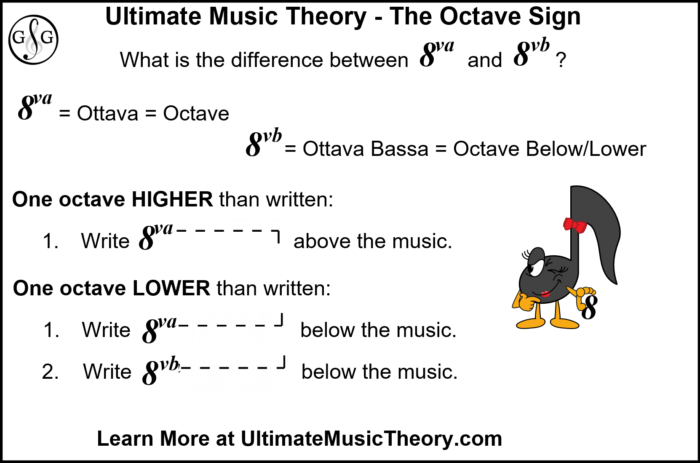
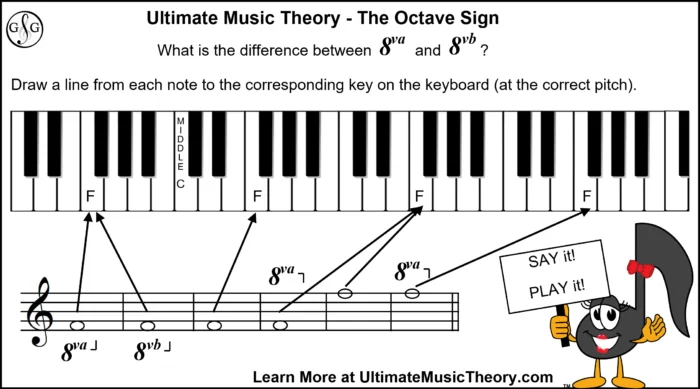
The Octave Sign - For Single Notes or Chords
Want to know a secret? I learned something new while I was researching and writing this Blog!
I thought that, to indicate that I wanted to write a single note or chord one octave lower or higher, I just needed to write 8va above the note or write 8va/8vb below the note. OOPS. That is not how it is written.
We need to write that little line (the " - " dash) beside the 8va/8vb sign. If the 8va is written above the note (to play one octave higher), we need to add a vertical line going down towards the staff.
If the 8va or 8vb is written below the note (to play one octave lower), we need to add a vertical line going up towards the staff.
The Octave Sign - For Notes, Phrases or Sections of Music
To indicate that multiple notes, a phrase or a section of music is to be played one octave higher, the 8va sign is written above the first note. Then, we add "dashes" from the 8va sign until the end of the music that is to be played higher.
To indicate that multiple notes, a phrase or a section of music is to be played one octave lower, the 8va or 8vb sign is written below the first note. Again, we add "dashes" from the 8va/8vb sign until the end of the music that is to be played lower.
When writing Octave Higher or Lower Signs, proper pitch is important!
Say and play both of these examples of music. Have I written the lines from the notes to the corresponding keys on the keyboard at the correct pitch?
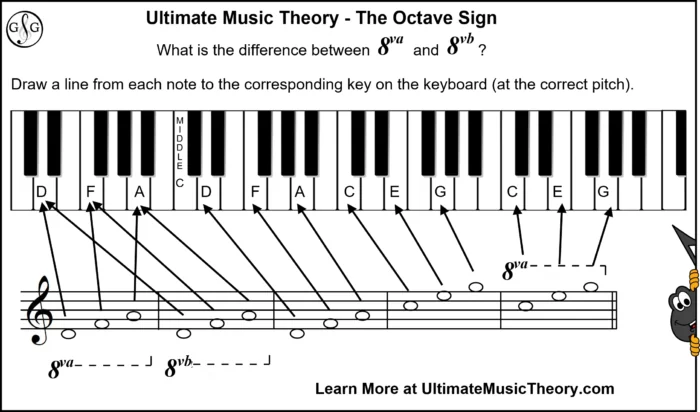
Why is pitch important? I tell my students that, in a baseball game, if the catcher signals to the pitcher to throw the ball low, the catcher will be prepared to catch that low ball. If the ball is pitched higher, the catcher may miss it because it is not the correct pitch!
Likewise, if the catcher sends the signal to pitch the ball high, that is where he is expecting the ball to be pitched.
In music, we must be specific with our notes. Each note on the staff must be pitched correctly if we want the music to sound properly.
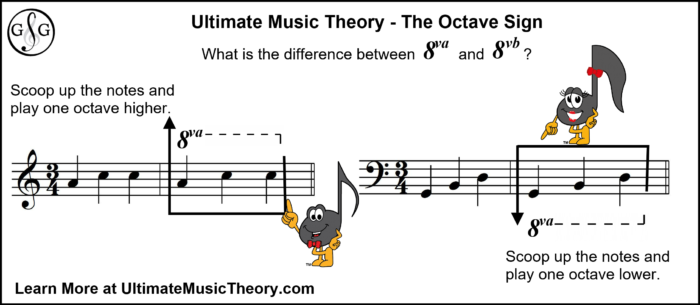
Here is a little tip that I use with my students.... Follow that up or down "dash" to scoop the notes.
When the dash is above, I follow the line to reach down and scoop all the notes up (higher). When the dash is below, I follow the line to reach up and scoop all the notes to bring them down (lower).
Do you have tips that you use with your Students to help them remember? I'd love to hear them.
Octave Sign - Spot the Boo-Boo Answers
Here are the answers to our Spot the Boo-Boo Quiz! When checking that the 8va/8vb sign is correct, remember to check for:
- Correct placement of the sign.
- Correct "directions" of the dashes.
- Correct pitching of the notes.
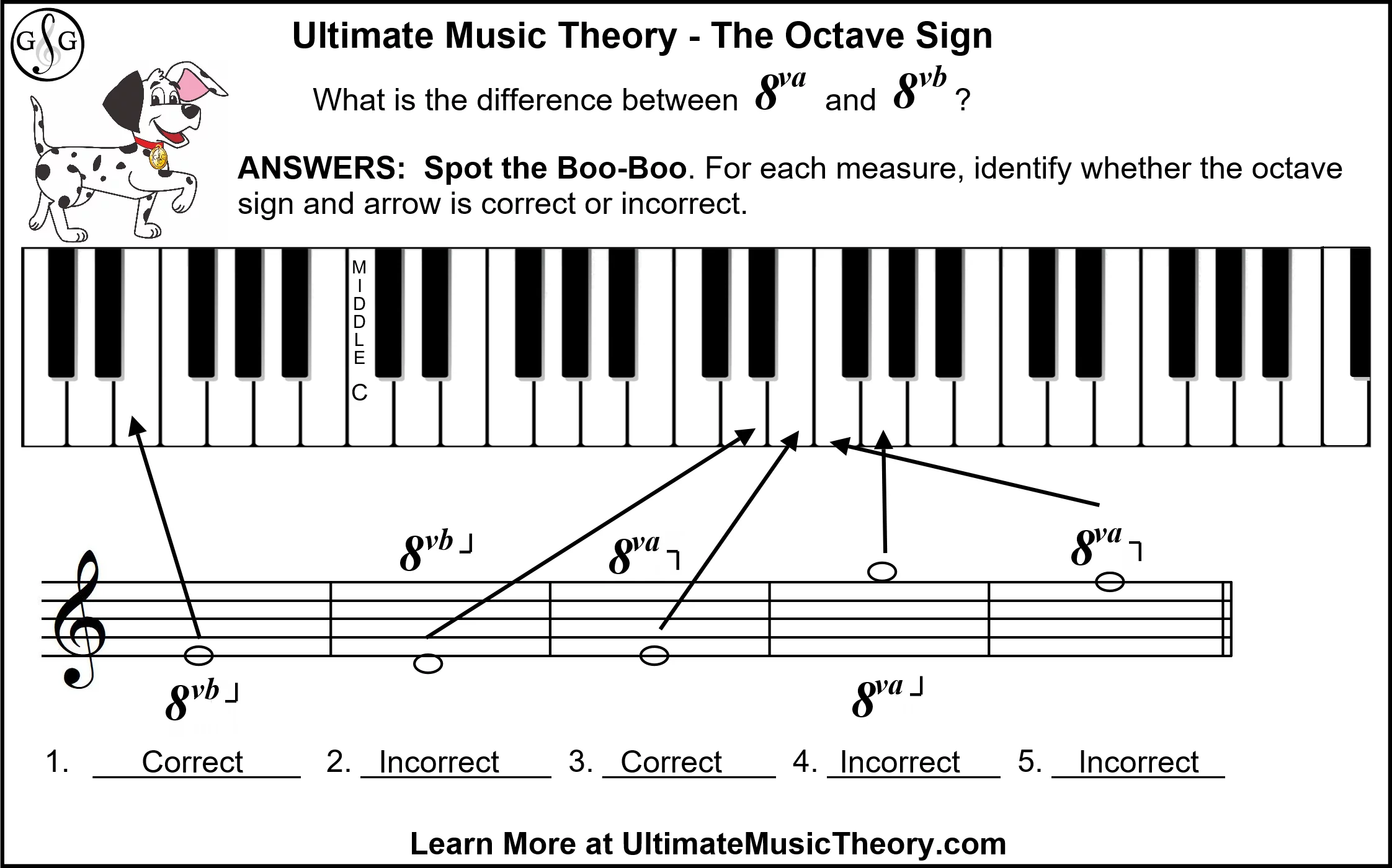
How did you do? Do you understand why #2, #4 and #5 are incorrect, while #1 and #3 are correct?
#2 is incorrect since 8vb can only be used below the note to indicate the note is to be played one octave lower than written.
#4 is incorrect because the line to the corresponding key is not at the correct pitch. Same with #5. Can you find the correct corresponding key for #4 and for #5? I bet that you can!
And remember, if you are an Ultimate Music Teachers Member, you get to download free Worksheets (with answers) for this Blog!
Do YOU have any Music Theory Questions?
If you ever have a Music Theory Question that you would like the answer to (or you just want to make certain that you are 100% understanding the concept), please let me know!
I can be reached at: Shelagh@UltimateMusicTheory.com
I really do love helping teachers feel 100% confident when they are teaching. And, I just might learn something new too! Win-Win! Thanks for reading!
Ultimate Music Teachers Membership
♪ LEARN ♪ PLAN ♪ TEACH ♪ GROW
The One & ONLY Ultimate Music Teachers Membership
To Become A UMT PRO!
Your Success Path Starts Here - Go To TeachUMT.com Today!
Keep on Learning... With a Smile and a Song!
Shelagh McKibbon-U'Ren



Great lesson! One other question, do these signs apply only to the notes in the clef they are written? That is, they don’t refer to notes in the other clef as well?
Hi Deborah: For the octave sign to apply to both staves, it will say “both”. According to the “Essential Dictionary of Music Notation”, the octave sign is never placed between 2 staves. It is preferable to temporarily switch the lower staff to a different clef.
Hi Shelagh, thank you for the article – very informative!
One quick question – how would you refer to 2 chords with bass notes sharing the same letter name (eg C), an octave apart with one in root position and the other in first inversion? . Example CEG, CEA where the first C may be a middle C and the second C an octave apart in first inversion? Thank you.
Each chord is just named based upon the notes that “sound” when the chord appears. CEG would be a “C” chord. CEA would be Am/C. Is that what you mean? Shelagh